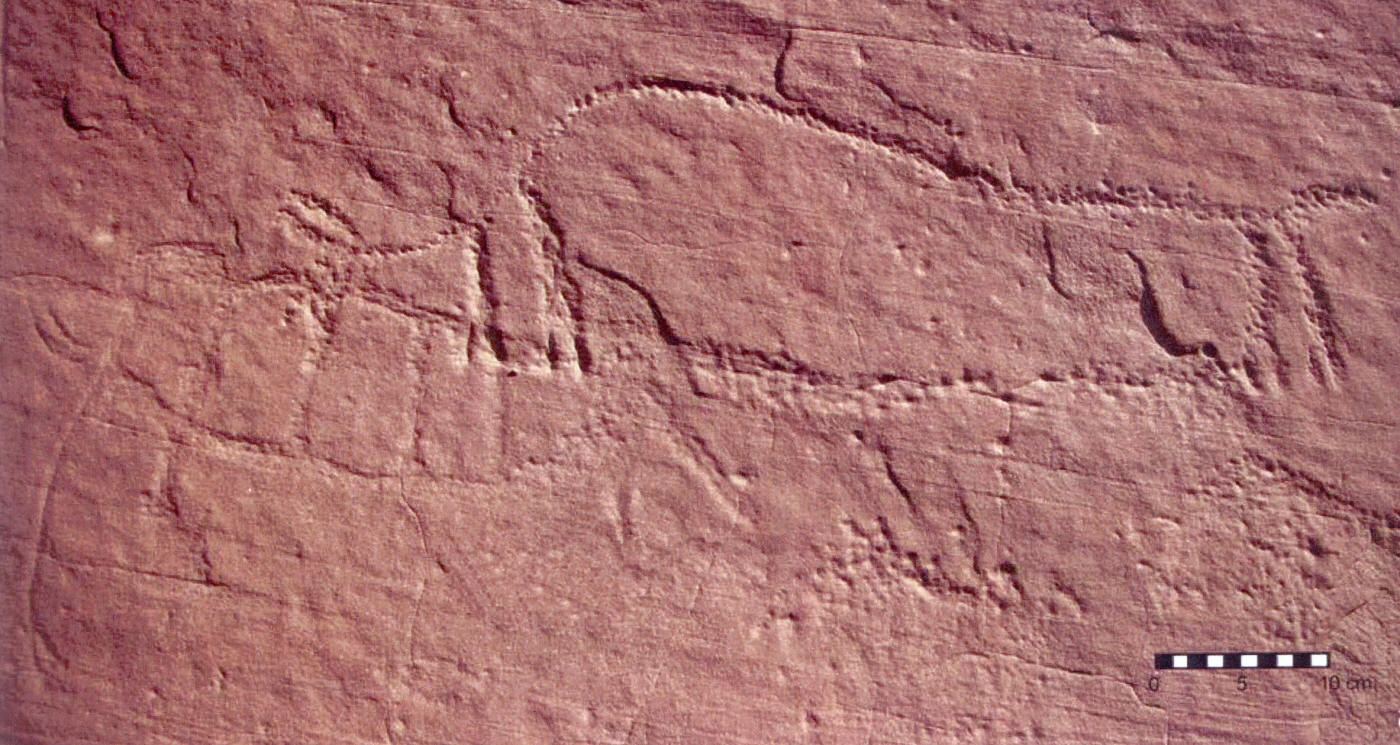|
MAMMOTH 1
UPPER SAND ISLAND ROCK ART SITE
SOUTH EASTERN UTAH
RETURN TO PAGE 1
COPYRIGHT
FEBRUARY 28, 2015 PETER A. BOSTROM
This picture shows an area of "rock
art" on the Upper Sand Island Rock Art site in south eastern Utah.
The pattern is thought to be very early and date to sometime between
the Pleistocene-Holocene transition period, approximately 13,300 to
12,500 years ago. It represents a portion of a cluster of
petroglyphs that are described as a panel. Although the highlighted
area in this picture appears "insect-like" there are specific
reasons why the image may represent a mammoth. The highlighted image
is designated as mammoth 1 because it was the first of two mammoth
designs that were discovered in the panel group. The design above
mammoth 1 is described as a bison. Both the mammoth and bison were
formed by pecking, incising, and scraping. They measure
approximately 87cm (34.25 inches) from the tip of the mammoth's tusk
to the tip of the bison's tail. The cut marks are significantly
weathered and re-varnished over most of their surfaces. A
comparison to more recent Ute horse petroglyphs located nearby show
an obvious age difference between the two. Magnification of the cut
marks indicate that the mammoth and bison were not recently made or
altered and that the bison was made after the mammoth.
Mammoth 1 has several design characteristics that suggests it
may represent a Columbian mammoth (Mammuthus columbi).
The most obvious features are the domed head, tusks, and trunk. The
domed head is clearly formed with a concentrated area of pecking
marks. The raised area behind the head may represent a raised
shoulder that is also a descriptive trait of mammoth anatomy.
Mastodons did not have these two identifiable features. Mammoth 1
also has two parallel tusks that extend outward from an area lower
on the head, unlike horns that would attach higher up near the top
of the head. The trunk is impressive for its length and for the fact
that it does have a bifurcated end that may represent "fingers."
Many Old World Paleolithic cave sites, such as Chauvet in France,
illustrate the ends of woolly mammoth trunks with one long and one
short grasping "finger." The shorter one is referred to as the
thumb. Although not very impressive, mammoth 1 has one front and two
back "stick-like" legs. If there was a tail, it appears that it may
have been removed by the addition of the above bison image.
Mammoth 1 has one design trait that does seem odd. The vertical body segmentation
makes the image look insect-like. Linear style quadrupedal figures
in both horizontal and vertical forms are known in the area. But
this style dates much later to the Middle Holocene and is not
similar to the design pattern in mammoth 1.

|
